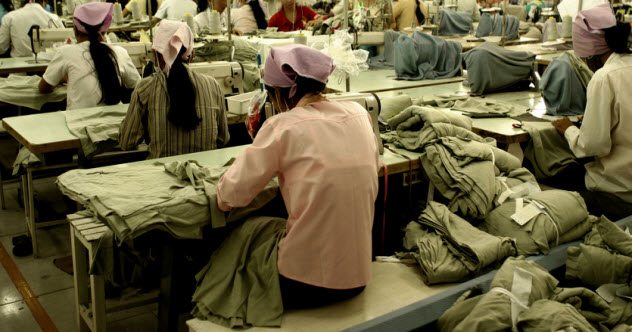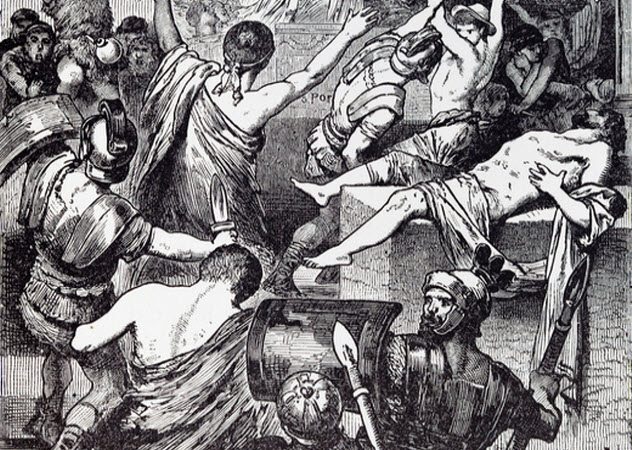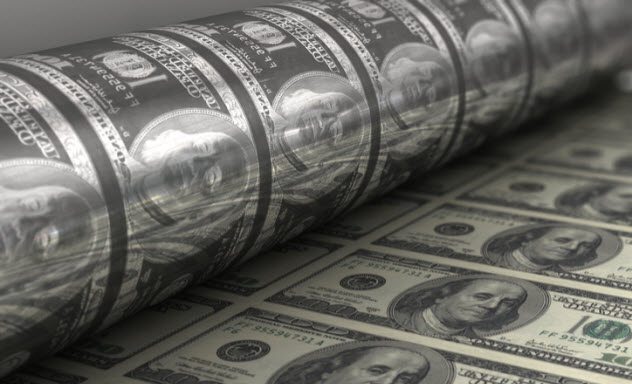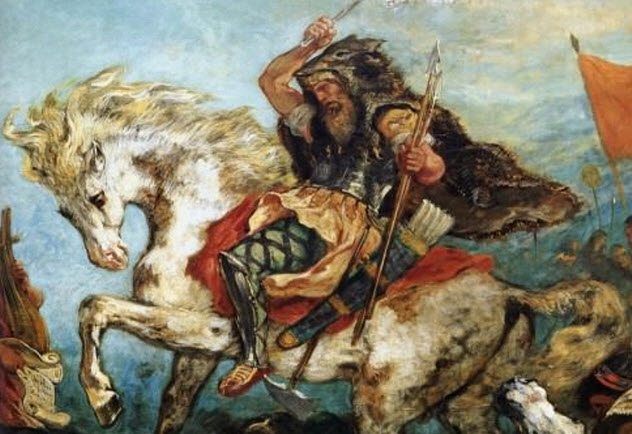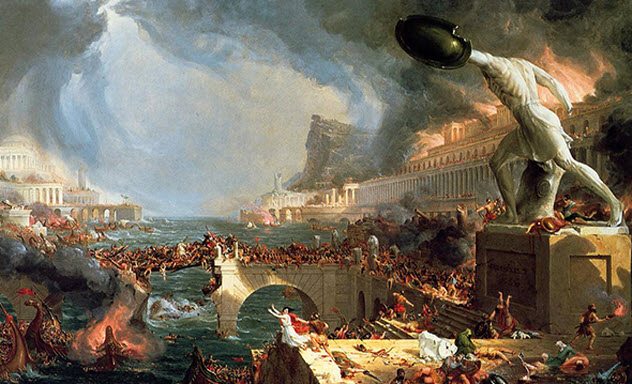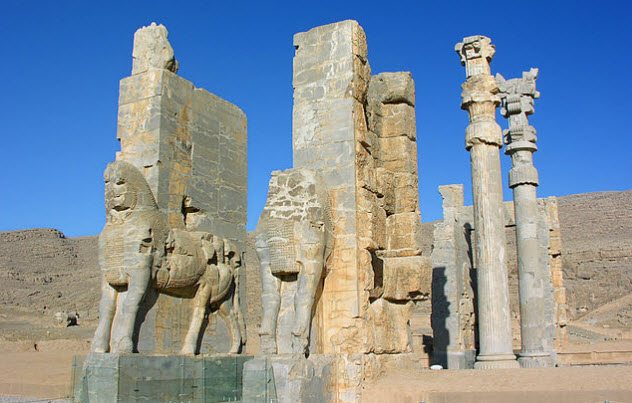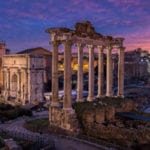SEE ALSO: 10 Truly Disgusting Facts About Ancient Roman Life That’s more or less what happened to Rome, and the aftermath was pure chaos. The fall of their empire sent the European world spiraling into a dark age that took centuries to escape. If we take them time to learn from their history, we’ll see some eerie parallels with our own. And if history really does repeat itself, we’ll get a pretty good idea of what’s to come next.
10 Oversea Slave Laborers Won’t Make Your Goods Forever
At its peak, money was rushing into the Roman Empire. The emperors and the government were basking in an absolute avalanche of wealth that helped them control the better part of the known world. But just because the nations had money didn’t mean the Roman people were getting rich. Instead of hiring their own people, the Romans got foreign slaves to do most of their work. A massive part of their production was being done by foreign slaves, which left the actual citizens with nothing to do. A lot of Romans were unemployed, relying on government subsidies and handouts just to survive.[1] Modern companies can’t get away with literally hiring slaves these days, but they can come pretty close. Like Rome, the modern Western countries outsource the vast majority of the things they buy to sweatshops that sometimes pay as little as 64 cents an hour. Approximately 60 percent of the things Americans buy are made overseas, but it’s not just the US that does this. China currently makes about 50 percent of the world’s clothes and 70 percent of its mobile phones. The real lesson from Rome, though, is what might happen next—because Rome’s setup didn’t last forever. The slaves started to demand more and revolted. Meanwhile, the people of Rome, influenced by Christian morality, started feeling bad about using slaves. Their labor system started to collapse. Since slave labor was the backbone of their entire economy, everything else went down with it.
9 Obesity Epidemics Don’t Get A Lot Of Sympathy
The average Roman probably wasn’t obese. A lot of Roman civilians struggled just to get food, but the emperors were a different story. The rich of Rome spent so much time having feasts and orgies that it actually became common practice to throw up mid-meal to keep it going. After watching Emperor Nero and his friends have a feast, the philosopher Seneca wrote that the wealthy of Rome “vomit that they may eat; and eat that they may vomit.” But it wasn’t just Nero. Julius Caesar once escaped an assassination attempt because he’d stepped out to vomit up his meal. Emperor Vitellius had a reputation for starting the day by belching his breakfast in the faces of his soldiers.[2] In the modern world, poor people in wealthy countries usually become obese—especially in the American South. In some states, type 2 diabetes rates are twice as high as they were 20 years ago. In fact, one-third of the population is obese now. The real lesson from Rome, though, is that having too much turns people against you. The reason these stories about lascivious Roman emperors have been passed on for so long is because their people wanted to make them look bad. One group of people was gorging themselves while another starved. All that was won by the wealthy was resentment, wars, and a lot of health problems.
8 The Nouveau Riche Never Remember Where They Came From
When Rome was a republic, one of its biggest internal problems was the fight between the patricians and the plebeians. The patricians were aristocrats who got their status by birth, while the plebeians were the common people who had no way of making a better life at the time. Like our modern societies, the plebeians fought for the right to pull themselves up by their bootstraps. They won equal rights, got the opportunity to play a role in Roman politics, and had the chance to make it rich. They helped each other get wealthy, voted their fellow plebeians into power, and then sat back and waited for their friends to make a new utopia of equality. It didn’t pan out. The newly rich plebeians didn’t do much to help out their old friends.[3] They just splurged with all their money and enjoyed life as rich people. The plebeians didn’t realize that right away, though. For a while, things were actually better and they thought their new government was working. But it turned out to be an economic boom brought on by a war. When the nation dipped back into a recession, they were poorer than ever. The poor stayed poor, the rich stayed rich, and the rare few who broke the mold didn’t do a thing to help out their fellow man.
7 People Who Are In Debt Can Be Controlled
After Rome was sacked by the Gauls, the republic had to funnel a fortune into defense. Taxes went up, the poor went bankrupt, and the people of Rome were soon overwhelmed with so much debt that they couldn’t see any way out of it. It’s something that ought to sound familiar to a lot of us. For example, the average American leaves college with more than $37,000 in debt from student loans alone, and that’s not even the worse case. In Australia, Switzerland, Norway, the Netherlands, and Denmark, the average person’s debt is more than twice their annual income. In fact, the average Australian owes $250,000.[4] Like a lot of us today, the plebeians of Rome lobbied their government for debt forgiveness. And the government listened. Now that the lower classes were politically equal, the politicians started pandering to them. Populist leaders promised “bread and circuses”—in other words, entertainment, food, and debt relief. The plebeians were so desperate to feed their families that they didn’t care what a politician did as long as he canceled their debt. So they started voting for populist leaders like Julius Caesar and Caesar Augustus. Since the bread and circuses kept coming, the plebeians didn’t get too worried when the elections stopped.
6 Printing Money Isn’t A Good Way To Save The Economy
A Chinese official once warned the US that its national debt was getting out of control. America, the official complained, was selling too many Treasury bonds. It was increasing the national debt in a way that could collapse the entire economy. America wasn’t just selling bonds. In the official’s words, the country was “printing money.”[5] That’s a move that ruined Rome. As the empire got bigger and its expenses got higher, Emperor Nero came up with the bright idea of using less silver in Roman coins. That way, he could print more money. And if Nero could print more money, he figured that he would have enough to make that Scrooge McDuck money pool he’d been dreaming of. The idea didn’t ruin everything overnight. But Nero’s successors copied him, and of course, inflation went wild. Over the next 200 years, the price of wheat increased 200-fold and Roman coins became almost completely worthless. Whether America is really “printing money” is up for debate. But they’re definitely putting off money problems for later. Despite having the highest GDP in the world, the US also has the highest debt in the world. They owe a staggering $18 trillion dollars, a lot of which comes from Treasury bonds. The country in second place for “most debt” is the European Union. That’s right—the entire European Union, which is 28 countries combined, has less debt than the United States has on its own.
5 Don’t Underestimate The Barbarians
Rome managed to stand its ground against massive empires. The Romans fought against Greece and Egypt and won. The greatest and most advanced societies fell at their feet, but Rome still got crushed—by barbarians. Everything started to go wrong when Attila the Hun rampaged through the Western Roman Empire. To the Romans, this was a primitive culture. One Roman wrote that the Huns were “so little advanced in civilization that they [made] no use of fire, nor any kind of relish, in the preparation of their food.” To the Romans, this was like a battle against cavemen.[6] It was a little like the modern war on terrorism. On one side was the most advanced and powerful country in the world, and on the other was a group of vicious men who didn’t care if they lived or died. The Romans lost. Attila demanded half their empire. When they refused, he rampaged through their country, stealing their siege weapons and advanced technology as he went. By the end, the Romans had to meet all his demands. From then on, they were regularly paying the Huns massive tributes just to beg the Huns not to finish Rome off.
4 Definitely Don’t Train The Barbarians In Advanced Warfare
Attila the Hun didn’t make it to Rome, but the Visigoths did. The Visigoth leader Alaric managed to lead a horde of barbarian warriors all the way to the Roman capital, take everything they had, and call himself merciful for letting them keep their lives. The Roman army was powerless to stop the barbarian hordes because, for the most part, the Roman army was the barbarian hordes. Alaric and the men who sacked Rome were armed and trained by the Romans. Years ago, Rome started hiring Visigoths and Gauls to fill up their legions. Eventually, there were so many barbarians in the Roman army that the Roman people just called their army “the barbarians” to save time.[7] During the Soviet-Afghan War, the US Army called Islamic fighters from around the Middle East to come to Afghanistan so the Americans could arm and train these Islamic fighters. Just as Rome trained Alaric and the Visigoths and gave them siege weapons, the US trained Osama bin Laden and the Taliban and gave them Stinger missiles. Maybe we shouldn’t be surprised that it turned out the same way.
3 Big Military Budgets Bankrupt Big Countries
The problem with being the world’s superpower is that it makes you the world’s biggest target. That’s something Rome learned. As they got bigger, their threats got bigger and they had to pour everything they had into the army. It’s something that America has learned, too. Even though military spending has skyrocketed since September 11, 2001, America isn’t safe. Today, Americans funnel $598.5 billion per year into their military. To put that in perspective, more than one-third of the whole world’s military spending is done by the US.[8] The Romans dealt with their ever-growing army by cranking up the taxes. But it didn’t really make things better. With massive taxes weighing down the people, unemployment and poverty ran rampant. The people started rioting in the streets against the government. For a lot of Romans, it became hard to understand what made living in Rome worth giving up everything to defend it?
2 Watch Out For Rising Eastern Empires
Perhaps the biggest threat wasn’t the people who were trying to burn Rome to the ground. In a way, the most dangerous problem may have been the people who were letting Rome be: Parthia, the Eastern empire than the Romans could never defeat. Early on, the Romans and the Parthians tried to destroy each other but they couldn’t pull it off.[9] The two nations were too powerful, and it just wasn’t worth it. So, in the end, they called for a peace treaty and agreed to leave side by side in relative peace. They entered a weird relationship as trade partners that didn’t trust each other and that tried to beat each other in every deal—a little like the United States and modern China. And that ended up changing everything. When a peaceful Han Chinese diplomat tried to reach Rome, the Parthians stopped him and turned him away. The diplomat found out that the Parthians had been deliberately keeping the two nations apart so that they could control Roman trade. If he’d made it through, though, Rome might have had an ally and an insight into the Huns before Attila invaded. And everything could have changed.
1 The Fall Of An Empire Doesn’t Happen Overnight
Rome didn’t collapse in a pile of fire and ashes. Just getting sacked by barbarians didn’t spell the end of Rome. It died out peacefully over hundreds of years from dozens of decisions that probably seemed like great ideas at the time. As the different parts of Rome started feuding over religious changes and economic problems, it got split up into parts a few times before it officially became two different empires in AD 364. A little over 100 years later, the Western empire completely fell to the hands of the barbarians and the lines of Europe started looking like crude early versions of a modern map.[10] Even that, though, wasn’t the real end of Rome. The Eastern empire, now known as the Byzantine Empire, lived on for more than 1,000 years after the split. As the Byzantine Empire, Rome survived the Sasanian War, the Muslim conquests, and even the Crusades before they were finally absorbed by the Ottoman Empire. It took 1,000 years, though, for Rome to die. It wasn’t over the second they stopped being the world’s biggest superpower. They lingered on for centuries. Their quality of life slowly changed, and most of their people were probably unaware that they were living through the fall of an empire. Odds are, the same thing will happen to us. We won’t go out in a big explosion. We’ll just slowly start fighting wars we can’t win and struggling with an economy we can’t handle. And slowly, we’ll become nothing more than a chapter in a history book. Read More: Wordpress
